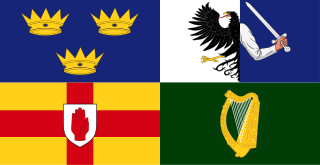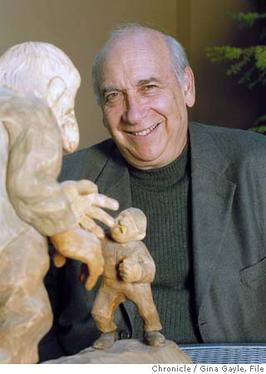Carl Wilhelm von Sydow
Last updated
Carl Wilhelm von Sydow (21 December 1878 – 4 March 1952) was a Swedish folklore scholar. A professor at Lund University, he was a pioneer of folklore studies in Sweden and contributed to establishing systematic methods in the field.
Contents
Early life and education
The son of Ludvig von Sydow, an agricultural school administrator, and Friherrin Göthilda Rappe, von Sydow was born in Ryssby and educated in Växjö; he entered Lund University as a student in 1897 and earned his master's degree in 1908 with a study of the legend of Finn and his wife and his doctorate in 1909 with a thesis titled Två spinnsagor—en studie i jämförande folksagoforskning (Two Spinning Legends—A Study in the Comparative Study of Folk Legends). [1] [2] [3] During his university studies, he taught at folk high schools and met the Danish folklorist Henning Frederik Feilberg, who inspired him to begin collecting folk tales. In 1907 he published Våra folkminnen—Folksaga, folksägen, folktro (Our Folklore—Folktale, Legend, and Folk Belief) and participated in the founding of the Federation of Folklore Fellows' Communications in Copenhagen. [2] Another folklorist who influenced him was Axel Olrik, who was to have been the disputant for his PhD thesis. [3]
Career
Von Sydow was appointed a lecturer in Nordic and comparative folkloristics at Lund University in September 1910, [1] and became a professor in 1938. [2] [3] [4] In April 1940 he was awarded a personal chair. [3] [4] [5] He was a pioneer of radio lecturing, beginning in 1926. [4] In 1914 he founded the journal Folkminnen och folktankar; in 1921 he became head of the foundation for the study of Swedish folklore established by Gunnar Olof Hyltén-Cavallius. [1] He also advised the Swedish government on the formation of a commission to study peasant culture, which was established in 1924. [4]
He was called up for national service during World War I. [6] In the 1930s he was a founder member of the Nazi-sympathising Riksföreningen Sverige–Tyskland (National Swedish-German Association) and served as vice president, but in April 1940 he resigned his membership. [7]
In addition to his publications on folklore, von Sydow contributed to the establishment of methodical study in the field in Sweden, [1] and his work was influential in other countries, particularly Ireland; [4] [8] beginning with Tors färd till Utgård (Thor's Journey to Útgarð), one of his areas of particular interest was Celtic influence in Germanic folklore and literature, and Irish Gaelic was among several languages he learnt in adulthood and one he taught at Lund in the 1920s. [3] An early interest in botany and zoology caused him to take a scientific approach to folklore study: in 1927 he originated the concept of the oicotype or ecotype, a form of a folktale which arose in adaptation to local circumstances, [2] [3] [4] [9] and suggested several other terms, such as dite (a saying) and memorate (a personal narrative, usually concerning a supernatural encounter). [2] [3] Starting in the 1920s, he came to regard many supernatural beings and customs in modern folk belief as ficts, fanciful explanations often meant to manage children by creating a bogeyman, and therefore came into conflict with other scholars' religio-historical theories, such as Wilhelm Mannhardt's analyses of harvest customs. [2] [3] He also came to repudiate the Finnish School in folklore studies as atomistic; he focussed on the transmission of folktales between individuals, for example drawing a distinction between 'active' and 'passive' tradition carriers or bearers (tale tellers and audience members). [2] [3]
Personal life
In 1906 von Sydow married Anna Quennerstedt , a painter. [10] They had a son, Bertil von Sydow, born in 1907. [11] After Anna von Sydow's death in 1924, he remarried to his second cousin Friherrin Maria Margareta Rappe, a school teacher, in 1926. [12] Their son, born in 1929, was the actor Max von Sydow. [13]
He died on 4 March 1952 and was buried in the family plot at the North Cemetery in Lund. [14]
Honours
- Honorary doctorate, National University of Ireland, 1937 [4]
Related Research Articles

A fairy tale is a short story that belongs to the folklore genre. Such stories typically feature magic, enchantments, and mythical or fanciful beings. In most cultures, there is no clear line separating myth from folk or fairy tale; all these together form the literature of preliterate societies. Fairy tales may be distinguished from other folk narratives such as legends and explicit moral tales, including beast fables. Prevalent elements include dwarfs, dragons, elves, fairies, giants, gnomes, goblins, griffins, mermaids, talking animals, trolls, unicorns, monsters, witches, wizards, and magic and enchantments.

Max von Sydow was a Swedish-French actor. He had a 70-year career in European and American cinema, television, and theatre, appearing in more than 150 films and several television series in multiple languages. Capable in roles ranging from stolid, contemplative protagonists to sardonic artists and menacing, often gleeful villains, he received numerous accolades including honors from the Cannes Film Festival and the Venice Film Festival. He has been nominated for two Academy Awards: for Best Actor for Pelle the Conqueror (1987) and for Best Supporting Actor for Extremely Loud and Incredibly Close (2011).

Irish folklore refers to the folktales, balladry, music, dance, and so forth, ultimately, all of folk culture.

Alan Dundes was an American folklorist. He spent much of his career as a professional academic at the University of California, Berkeley and published his ideas in a wide range of books and articles.
The Aarne–Thompson–Uther Index is a catalogue of folktale types used in folklore studies. The ATU Index is the product of a series of revisions and expansions by an international group of scholars: originally composed in German by Finnish folklorist Antti Aarne (1910), the index was translated into English, revised, and expanded by American folklorist Stith Thompson, and later further revised and expanded by German folklorist Hans-Jörg Uther (2004). The ATU Index, along with Thompson's Motif-Index of Folk-Literature (1932) – with which it is used in tandem – is an essential tool for folklorists.

The Sword of Light or Claidheamh Soluis is a trope object that appears in a number of Irish and Scottish Gaelic folktales. The "Quest for sword of light" formula is catalogued as motif H1337.

Richard Mercer Dorson was an American folklorist, professor, and director of the Folklore Institute at Indiana University. Dorson has been called the "father of American folklore" and "the dominant force in the study of folklore".
Fair, Brown and Trembling is an Irish fairy tale collected by Jeremiah Curtin in Myths and Folk-lore of Ireland and Joseph Jacobs in his Celtic Fairy Tales.

Kevin Danaher was an Irish folklorist with a special interest in ethnography and military history.

Grateful dead is both a motif and a group of related folktales present in many cultures throughout the world.
Inger Margrethe Boberg was a Danish folklore researcher and writer. She studied philology at the University of Copenhagen and received her Master's degree in 1925. In 1927, she stayed at Lund University with the folklore professor Carl Wilhelm von Sydow. In 1934, she obtained the Dr. Phil. degree in folkloristics as the first woman in Denmark. From 1932 to her death, she was archivist at the Danish Folklore archive. However, during many years, she had to occasionally take temporary jobs as a school teacher in order to provide a living for herself. Not until 1952, when she had a long-established name in international folkloristics, she obtained a steady position.
Séamus Ó Duilearga was an Irish folklorist, professor of folklore at University College Dublin and Director of the Irish Folklore Commission.
Bo Gunnar Almqvist was a Swedish academic and folklorist.
Reidar Thoralf Christiansen was a Norwegian folklorist, archivist of the Norwegian Folklore Collection (NFS) and professor of folkloristics at the University of Oslo.
The Motif-Index of Folk-Literature is a six volume catalogue of motifs, granular elements of folklore, composed by American folklorist Stith Thompson. Often referred to as Thompson's motif-index, the catalogue has been extensively used in folklore studies, where folklorists commonly use it in tandem with the Aarne–Thompson–Uther Index, an index used for folktale type analysis.
The New Society of Letters at Lund is a scientific academy founded in 1920. The purpose of the foundation was "to promote scientific humanities research", to which younger scientists in the humanities, theology and social sciences at Lund University would gather. The founders were the Sanskrit researcher Herbert Petersson, the folklore scholar Carl Wilhelm von Sydow, and the linguist Jöran Sahlgren, with the assistance of the historian Lauritz Weibull. The name was taken from the Royal Society of Sciences in Uppsala
In folkloristics, "The Animal as Bridegroom" refers to a group of folk and fairy tales about a human woman marrying or being betrothed to an animal. The animal is revealed to be a human prince in disguise or under a curse. Most of these tales are grouped in the international system of Aarne-Thompson-Uther Index under type ATU 425, "The Search for the Lost Husband". Some subtypes exist in the international classification as independent stories, but they sometimes don't adhere to a fixed typing.
Elis Chiewitz, born 13 April 1784 in Stockholm, died 24 June 1839 in Hammarlund, Åland, was a Swedish musician and artist.
Anna "Anta" Birgitta Rooth was the first Swedish professor of ethnology at Uppsala University. She is known for her research into folklore, especially the Cinderella story.
Brita Sigrid Anna Lovisa Egardt was a Swedish ethnologist and folklorist who undertook research into folk beliefs and customs. Attached to the Folklife Archive (Folklivsarkivet) at Lund University, from 1967 to 1973 she was docent of Nordic and comparative folklore research and thereafter docent of ethnology research specializing in folk customs. In addition to her highly rated 1962 thesis Hästslakt och rackarskam, she was a co-editor of Schwedische Volkskunde. Quellen. Forschung. Ergebnisse (1961) and contributed articles on folklore to various journals.
References
- 1 2 3 4 "Sydow, von 5. Karl (Carl) Vilhelm". Nordisk familjebok (in Swedish). 1926. p. 733.
- 1 2 3 4 5 6 7 Dundes, Alan, ed. (1999). "Geography and Folk-Tale Oicotypes: Carl Wilhelm von Sydow". International Folkloristics: Classic Contributions by the Founders of Folklore. Lanham, Maryland: Rowman & Littlefield. pp. 137–40. ISBN 9780847695140.
- 1 2 3 4 5 6 7 8 9 Berg, Gösta (1971). "Carl Wilhelm von Sydow (1878–1952)". Leading Folklorists of the North: Biographical Studies. By Strömbäck, Dag (ed.). Scandinavian University Books. Oslo: Universitätsforlaget. pp. 171–88. OCLC 467173798.
{{cite book}}:|author-first=has generic name (help) Also in Arv 25–27 (1969–71) pp. 171–88. - 1 2 3 4 5 6 7 Fitzgerald, Kelly (2010). "Carl Wilhelm von Sydow: a Swedish pioneer in folklore". Béaloideas (Review). 78: 237–39. JSTOR 41412225.
- ↑ Bringéus, Nils-Arvid (2006). Carl Wilhelm von Sydow som folklorist. Acta Academiae Regiae Gustavi Adolphi (in Swedish). Vol. 94. Uppsala: Kungliga Gustav Adolfs Akademien för svensk folkkultur.